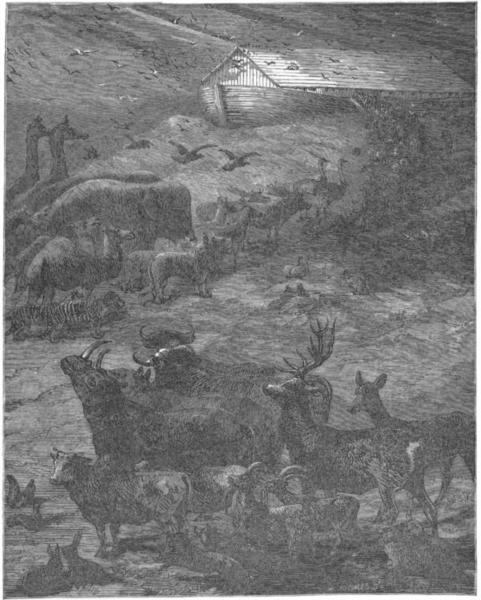 The animals entering the ark.
The animals entering the ark.
NAUTICAL ILLUSTRATIONS
681 PERMISSION-FREE ILLUSTRATIONS FROM NINETEENTH-CENTURY SOURCES SELECTED BY JIM HARTER
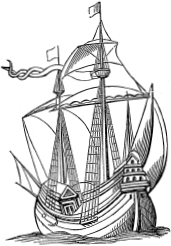
DOVER PUBLICATIONS, INC.
MINEOLA, NEW YORK
Copyright Copyright 2003 by Dover Publications, Inc. All rights reserved.
Bibliographical NoteNautical Illustrations: 681 Permission-Free Illustrations from Nineteenth-Century Sources is a new work, first published by Dover Publications, Inc., in 2003. DOVER
Pictorial Archive SERIES This book belongs to the Dover Pictorial Archive Series. You may use the designs and illustrations for graphics and crafts applications, free and without special permission, provided that you include no more than ten in the same publication or project.
For permission for additional use, please email the Permissions Department at or write to Dover Publications, Inc., 31 East 2nd Street, Mineola, New York 11501. However, resale, licensing, republication, reproduction or distribution of any illustration by any other graphic service, whether it be in a book or in any other design resource, is strictly prohibited. Library of Congress Cataloging-in-Publication Data Nautical illustrations: 681 permission-free illustrations from nineteenth-century sources / selected by Jim Harter. p. cm. (Dover pictorial archive series) eISBN-13: 978-0-486-17447-1 1.
Ships in art. 2. Boats and boating in art. 3. Wood-engraving19th century. 4.
Wood-engraving20th century. I. Harter, Jim. II. Series. NE957.N38 2003
743.962381dc21 2002041766 Manufactured in the United States by Courier Corporation
42835405
www.doverpublications.com 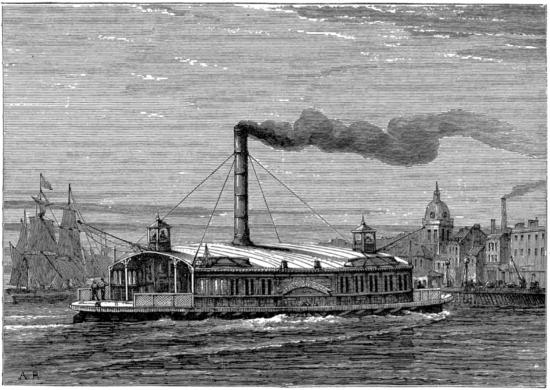 Ferryboat, New York Harbor
Ferryboat, New York Harbor
INTRODUCTION
W hile this book is intended for all who love boats, ships, history, and nautical lore, it is also designed as a definitive source of high-quality, royalty-free images for use by artists, graphic designers, desktop publishers, ad agencies, and more.
This collection of 681 wood engravings includes striking examples of some of the worlds most beautiful boats and ships. Among the many famous vessels in this volume are Columbus ships, the Nina, Pinta, and Santa Maria; King Henry VIIIs Great Harry; the Pilgrim fathers Mayflower; Henry Hudsons Half Moon; King Charles Is Sovereign of the Seas; Captain Cooks Discovery; the HMS Bellerophon; Fultons Clermont; and the Great Eastern. Among famous naval battles shown are the conflict at Actium, the invasion of the Spanish Armada, Dutch-English engagements in the seventeenth century, Ansons Centurion capturing a Spanish treasure ship, Nelsons victory at Trafalgar, Perrys triumph at Lake Erie, and the Civil War ironclad contest between the Monitor and Merrimac. In this volume one can find many different types of vessels: rowboats, funeral barges, Venetian gondolas, catamarans, Native American canoes, Chinese junks, tugboats, canal boats, barges, yachts, brigs, barks, sloops, skiffs, catboats, various kinds of vessels used for fishing and whaling, ships in distress, etc. One can also find examples of nautically related material: navigational instruments, diving suits and helmets, lighthouses, canal locks, dry docks, two views of the Suez Canal, helmsmen, ship captains, seamen at work, deck scenes, and interiors of vessels. I have organized this material in both a chronological and categorical manner.
One could say that it is arranged first of all vertically, and later horizontally. The vertical arrangement is a continuous time-line from the earliest vessels of antiquity to the mid-nineteenth century. Thus the unfolding sequence of pages reveals examples of ancient Egyptian vessels; galleys, biremes, and triremes from ancient Greece and Rome; fierce Viking ships; vessels of the Middle Ages; stouter ocean vessels that allowed the Spaniards to discover the New World; elegant Venetian galleys; galleons; pirate vessels; men-of-war; and battles spilling the blood of the major contending naval powers: Spain, France, Holland, Britain, and later, America. This vertical movement culminates with the beautiful frigates and clippers of the mid-nineteenth century. We then return to the late eighteenth century to begin a parallel movement. This time we are following the time-line of steam technology.
The illustrations begin with the earliest experiments with steam power. Fultons Clermont (1807) provided the breakthrough, adequately demonstrating the practicality and potential that lay ahead for this new mode of power. Steamboats went through different evolutions depending on whether paddle wheels or screw propellers were used. The massive giant, Great Eastern, which laid the Atlantic Cable, used both types of propulsion. After commercial and passenger steam vessels are explored in some detail, examples are shown of new military applications. Notably important was the development of ironclads during the American Civil War.
This inspired a swift revolution in the design of naval craft worldwide, and also created an interest in submarines and fast torpedo boats. Steam also powered more specialized vessels, including dredges, tugboats, ferryboats, yachts, and launches. From this point on, our exploration moves horizontally, examining the remaining spectrum of the nineteenth-century nautical world. We look at contemporary sailing yachts, fishing and whaling vessels, various types of small boats, vessels in difficult weather or distress, Arctic exploration, peripherally related images such as lighthouses, sea mythology, diving, sailors and seamen, etc. The last pages in the book are devoted to traditional styles of vessels that have evolved in localized settings such as Venice, the Nile Valley, the Arab world, India, China, Indonesia, and Micronesia. The vast portion of this material has been culled from engravings that were produced as early as the 1850s and extends through the beginning of the twentieth century.
Also included are a few early-twentieth-century line drawings. These pictures, which come from many different, often rare, sources, were primarily published in the United States, Britain, France, and Germany. Among the sources used for compiling this volume are the following periodicals: Illustrated London News, LIllustration, Harpers Weekly, Harpers Monthly, Leslies, Scientific American, La Nature, Engineering, and The Engineer. Other volumes helpful to this enterprise included The Sea by F. Whymper; Merveilles de la Science by Louis Figuier; and Meyers Konversations Lexikon. However, probably over a hundred other publications have contributed to this work as well.
It is our hope that the many beautiful engravings in this book will be a revelation to all and a source of inspiration for artists, illustrators, and perhaps even boat builders. JIM HARTER 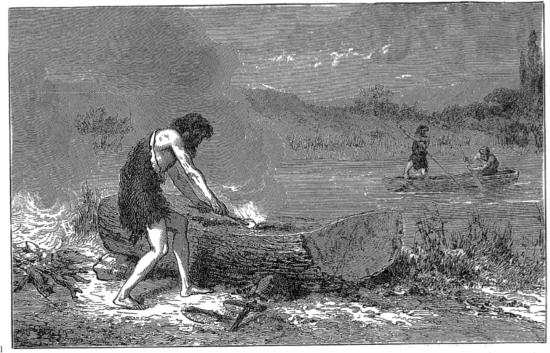
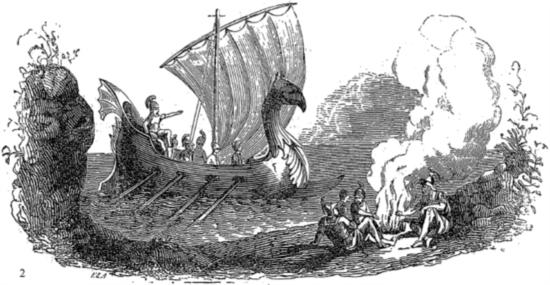
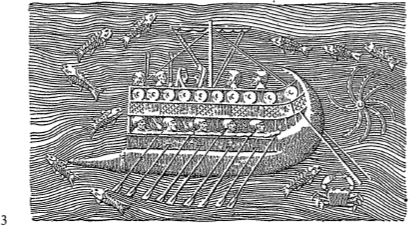
Next page
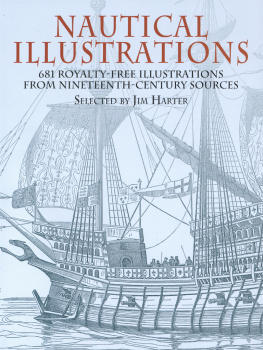


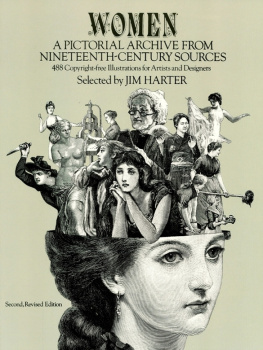
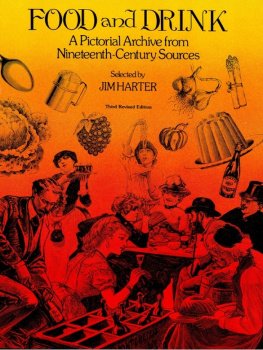
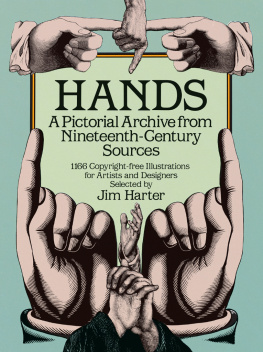
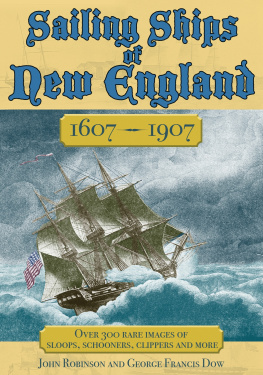



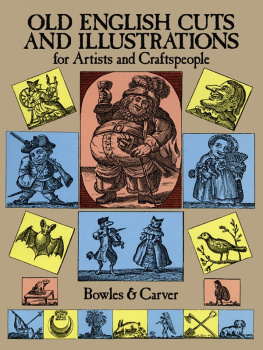

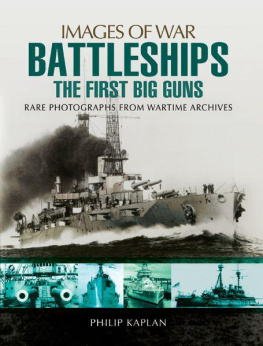
 The animals entering the ark.
The animals entering the ark. DOVER PUBLICATIONS, INC.
DOVER PUBLICATIONS, INC. Ferryboat, New York Harbor
Ferryboat, New York Harbor

